Chemistry for Conservation and Art
Preserving artworks for the next generations
A work of art is a dynamic object. From the moment of its material creation, it is subjected to chemical and physical changes that ultimately result in an altered appearance and structural modifications that change over time. In order to address these alteration phenomena, it is necessary to understand the materials of the artworks on a molecular level. In our work, we aim to learn how these complex, heterogeneous materials physically change as they age, and how - and to what extent - they are influenced by conservation treatments and by their environment. Obtaining this knowledge is crucial for developing well-founded conservation strategies and selecting the safest storage conditions to preserve artworks for future generations.
The 'Chemistry of Conservation and Art’ research activities are embedded within the Netherlands Institute for Conservation, Art and Science (NICAS), of which the University of Amsterdam is one of the founding partners. NICAS is a multidisciplinary research institute that unites the disciplines of conservation, art history and science with the aim of understanding and solving challenges in cultural heritage research, so we can preserve and enjoy art in the future.

Research projects
-
Operation Night Watch
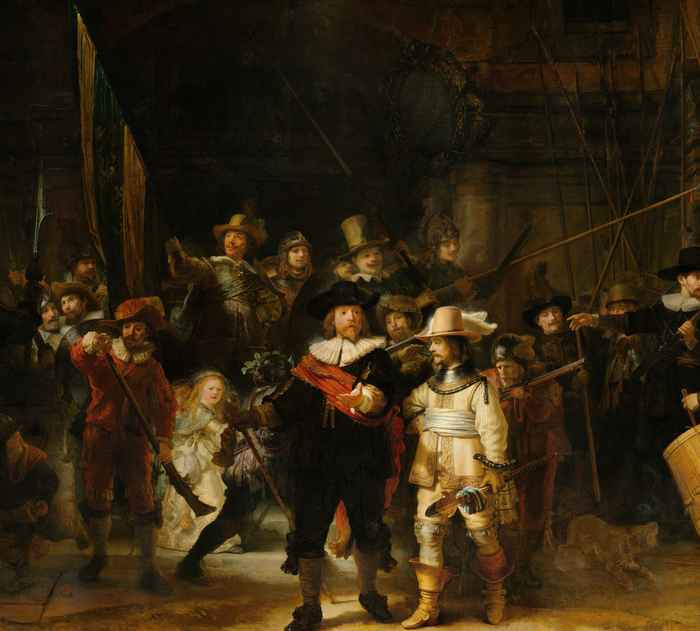
HIMS scientists contribute to Rijksmuseum's biggest research and conservation project in the history of Rembrandt’s masterpiece The Night Watch.
The goal of Operation Night Watch is the long-term preservation of the painting. The entire operation takes place in a specially designed glass chamber so that visitors of the museum can observe the process. The latest and most advanced research techniques are used, ranging from extremely high-resolution photography to hyperspectral imaging and X-ray diffraction, coupled to computer science and artificial intelligence for data processing and interpretation.
HIMS scientists investigate the internal molecular structure of the multilayered paint at sub-micro scale in 2D and 3D with microscopic and spectroscopic techniques. Degradation phenomena and reaction products are studied in tiny samples taken from The Night Watch and in oil paint model systems to understand paint degradation pathways and their kinetics. The degradation products are used to reconstruct the original composition of the impastos (thick paints with beautiful 3D surface structures) of Rembrandt, whose paint recipes are still a mystery. To support the cleaning phase of Operation Night Watch, the physicochemical processes induced or enhanced by solvent exposure are investigated. The research by HIMS researchers focuses on comparing the impact of different solvents and application methods to minimise the risk of potential long-term damage to paintings during cleaning.
-
Predicting aging of oil networks
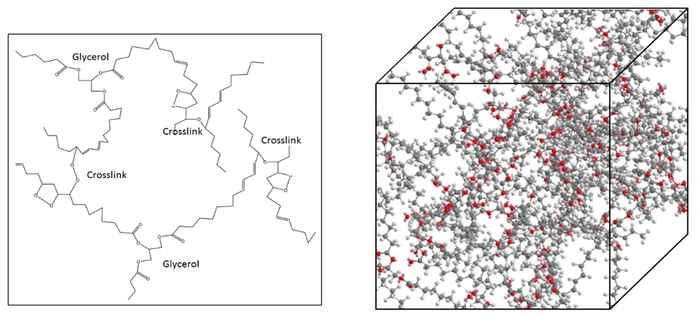
Little is known about the intrinsic instability of oil paintings. It can become manifest by visual damage, a possible warning sign for more dramatic deterioration in the future. Damage - such as protrusions or discolourations - is often caused by the formation of metal soaps, compounds of metals with fatty acids. Oil paintings are essentially thermodynamically unstable systems developing towards more stable, but aesthetically less attractive, states. Analyzed paint samples prove that metal is displaced across the paint film in this process, but the exact role of the linseed oil networks used as a binding medium is unclear.
This project (acronym: Predagio) aims to better understand the behaviour of metal in linseed oil networks by gaining more information about the microstructure of the latter. It will use multi-scale mathematical modelling to predict this microstructure in the various states of an oil painting, from the process of applying the paint through the drying stage until highly degraded conditions. The models will answer questions about the extent to which higher temperatures and relative humidity and the ranges of fluctuations in both promote degradation of pigments in oil paintings. This information is crucial in making informed decisions about safe display and storage conditions.
Funding: NWO
-
3D understanding of degradation products in paintings
Paintings are subject to various alterations over time and nowadays often have a different appearance than originally intended by the artist. In this research project, we want to visualize - in 3D - the degradation processes that take place in the painting, specifically the degradation of arsenic- and lead-containing pigments.
A better understanding is necessary in order to delay or completely stop these degradation processes. To achieve this, data fusion technology will be used, a technology that is already used in heterogeneous catalyst research to combine various types of imaging information in 3D. This involves combining 2D distribution maps of the paint components on the macroscopic and microscopic scales, spectroscopic information and 3D density volumes obtained by computer tomography. The generated model provides a 3D image of the paint composition making it possible to visualize the degradation and migration processes in the paint layers in relation to the paint surface.
The knowledge generated in this project (acronym: 3D2P) is relevant to conservators, for a better understanding of paint degradation phenomena in order to develop and tailor more appropriate conservation treatments. For art historians, the 3D models of the paint build-up will provide insight and a means to obtain a better understanding of the techniques employed by the artists involved.
Funding: NWO
-
A fundamental molecular understanding of oil paint degradation
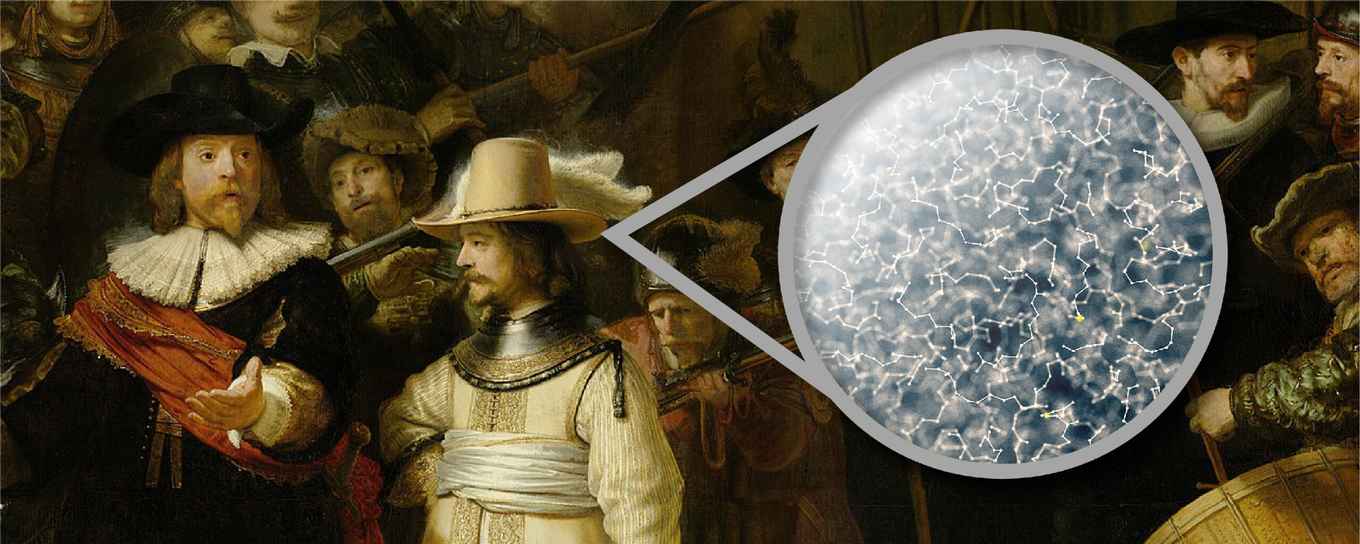
Oil paintings are subject to slow ageing processes that can harm their appearance and structural integrity. In this project, the research focus will move from the characterisation of materials to the quantification of processes; using fundamental chemical science to make an impact on the preservation of oil paintings.
Exposure to water, whether as environmental humidity or as cleaning solutions, is known to strongly influence the rate of oil paint degradation. In this project, we study in molecular detail how water influences oil paint degradation processes, and quantify their sensitivity to humidity fluctuations and paint restoration practice.
To achieve this goal, a combination of multiple advanced infrared spectroscopy methods will be applied to paint materials. These techniques will make it possible to study the effect of water on:
- The release of metal ions from pigment particles, and the rate of metal ion migration in the oil;
- The structure of the ionomeric oil polymer with potentially reactive metal ions;
- The timescale of hydrolysis of polymer ester groups, that results in oil network breakdown and metal soap crystallisation.
This research will provide crucial information on the influence of water on degradation kinetics, to support museums around the world in the development of improved conservation strategies and optimal indoor climate conditions that minimise oil paint deterioration.
Funding: NWO Veni grant (Joen Hermans)
-
The cleaning of paintings: a molecular perspective
The focus of this project is on degradation phenomena related to the cleaning of paintings. In order to be exposed to the public in pristine condition, paintings in collections all over the world are repeatedly exposed to organic solvents for the removal of varnishes and to aqueous solutions for surface cleaning.
In addition, keeping the relative humidity constant and relatively low in both museum conditions and during storage of paintings is accepted to be a good strategy for limiting degradation phenomena in paints.
Although also based on scientific research, these measures and methodologies are often based on practical experience and risk limitation. On a molecular level, reactions inside ageing oil paints are not yet well-understood.
Questions that are dealt with in this project include for example: can the exposure of a paint surface to solvents trigger new reactions inside the paint? How do reactions inside paint layers, such as metal soap crystallization, depend on varying conditions? What is the role of water on a molecular level?
Due to the inherently multidisciplinary nature of these questions, the use of various analytical techniques is required. This project, therefore, combines many sub-disciplines of chemistry such as inorganic-, organic-, polymer-, analytical chemistry and spectroscopy.
Funding: This research is carried out within the framework of the NANORESTART project (EUHorizon 2020 agreement No 646063).
-
Study of zinc white degradation in oil paint
Application of novel synchrotron-based analysis techniques
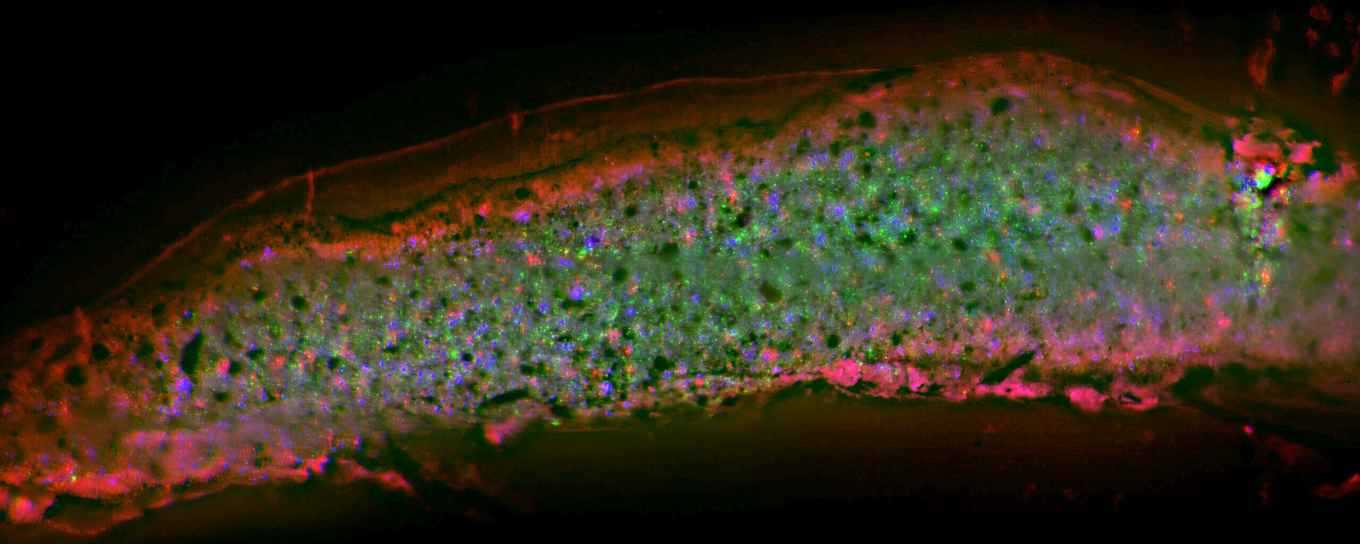
Zinc white is a pigment that, due to its non-toxicity, was introduced as an alternative to lead white in the mid-19th century. It has been extensively used ever since and can be found back in a wide range of works from painters such as Van Gogh, Mondrian, and Gauguin. Some disconcerting degradation phenomena, such as the delamination of paint layers, have been linked to the degradation of zinc white, making the understanding of its degradation processes a research topic of high interest.
In this project, we aim to develop and apply novel analysis techniques that can provide a detailed understanding of the degradation of zinc white in oil paint. Close collaboration with IPANEMA allows for access to high-end synchrotron-based methodology and the know-how with regards to its application to cultural heritage materials.
So far, we have been working most intensively on the combination of deep UV photoluminescence microscopy and microspectroscopy, as well as the interpretation of the datasets that are obtained using this technique. The datasets contain information of high lateral resolution and chemical specificity, which makes it possible to visualise degradation products and discriminate between different types of zinc white, as well as various other pigments. Current experiments are aimed at chemically characterizing the various zinc compounds that are typically found in an aged zinc white paint film, using (μ-) EXAFS (Extended X-ray Absorption Fine Structure).
Funding: Bennink Foundation
-
Ultramarine disease
Unravelling the mechanism behind binder-pigment interactions in ageing ultramarine blue paint

Ultramarine is a highly-valued, brilliant blue pigment naturally obtained from the mineral lazurite, which is the main component in the semi-precious stone lapis lazuli.
Ultramarine-based paints – for instance, lazurite mixed with linseed oil – are known to exhibit a degradation phenomenon, known as “ultramarine sickness” or “ultramarine disease,” that drastically changes the aesthetic and integrity of the artwork, showing cracking, flaking, and/or apparent colour change. Our research project is interested in understanding the mechanism of ultramarine paint degradation and determining a means to identify and prevent the onset of such degradation.
We hypothesize that “ultramarine sickness/disease” is the result of accelerated binding medium (e.g. oil) degradation catalyzed by ultramarine (or lazurite), supported by evidence of its catalytic activity in catalytic test reactions. To determine the potential catalytic activity of lazurite toward oil degradation, we study the effect of pigment preparation on lazurite properties and, in turn, catalytic activity toward oil-relevant reactions. Further, we analyze historically relevant paint samples for comparison.
With these areas of focus, we aim to gain a deeper understanding of the ultramarine degradation phenomenon as it naturally arises.
Funding: AkzoNobel
-
Irradiation passport for art
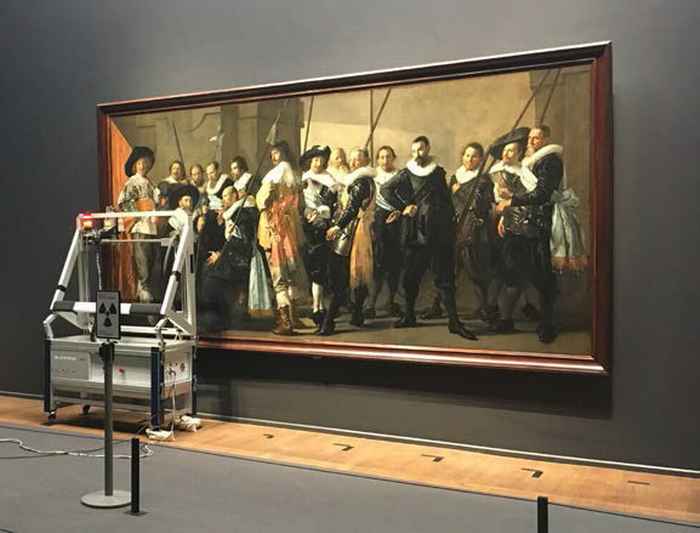
Objects of art are increasingly exposed to ionizing radiation. Modern analytical techniques use the interactions of photons, electrons and ions with materials to identify the materials in the object. But interaction means that irradiation may induce visible or invisible alterations, either permanent or temporary. Exposure to radiation is of a cumulative nature, which means that previous exposure may alter – or change the sensitivity of objects or research samples. Therefore, art objects as well as research samples in the field of cultural heritage need an irradiation passport, recording the location, total exposure and circumstances of use of radiation. Without such a passport, objects may be exposed to dangerously high amounts of radiation, results of analyses may be misinterpreted, and research into the long-term effects of irradiation of objects of art is impossible. The IPA project will develop an irradiation passport for art objects and research samples and will implement this passport in the conservation field. In addition, the passport will be tested in a pilot project, irradiating a well-characterized sample (dyed wool) with different radiation sources and studying the changes that occur. The IPA project is led by conservation scientists, a physical chemist and a conservator and has the support of an international team with different irradiation expertise, in which important synchrotron-institutes and research institutes involved in research in cultural heritage are represented.
Funding: NWO
-
Imaging inorganic in organic
The synchrotron-based microscopic in-depth chemical monitoring of short term and long term interactions of inorganic and organic in historical and industrial paintings and coatings
This project is a collaborative project between the European Synchrotron Radiation Facility (ESRF), AkzoNobel, Stichting Het Rijksmuseum and the University of Amsterdam. The goal is to study short term and long term drying reactions, and notably reactivity between metallic catalysts and alkyd binders. The analyses will be mainly based on 2D micro-imaging techniques (in particular infrared and synchrotron-based X-ray analyses such as X-ray fluorescence and X-ray diffraction), performed at Grenoble (beamline ID21 mainly) and in the Netherlands (UVA, Rijksmuseum and AkzoNobel).
Partners: ESRF (France), AkzoNobel, Rijksmuseum
Funding: InnovaXN – 2019, a Horizon 2020 MSCA COFUND programme
-
Computationally-based imaging of structure in materials
This project, acronym CuBISM, is a five-year interdisciplinary research and educational program at the intersection of science and art, focusing on art as a catalyst for the development of innovative and holistic approaches to change over time in complex materials systems. Through computationally based imaging of structure in the materials used to create works of art, the central challenge is to tie the visual appearance of painted surfaces to the underlying molecular and microscopic material structures and to use this correlation to investigate material properties. The analytical and methodological tools developed by the project will have broad relevance to the materials science and conservation science communities, illustrating the creative aspects of both science and art to a diverse audience.
Funded by the National Science Foundation’s Partnerships for International Research and Education (PIRE) program, the project leverages expertise and resources from Northwestern University, the Art Institute of Chicago, and leading cultural heritage institutes and Universities in the Netherlands, France, and Italy. Through this collaborative research and educational infrastructure, the project prepares early-career scientists to engage in globally integrated research networks, building skills in communicating the role of science in society.
-
Toolbox for studying the Chemistry Of Light-induced Degradation
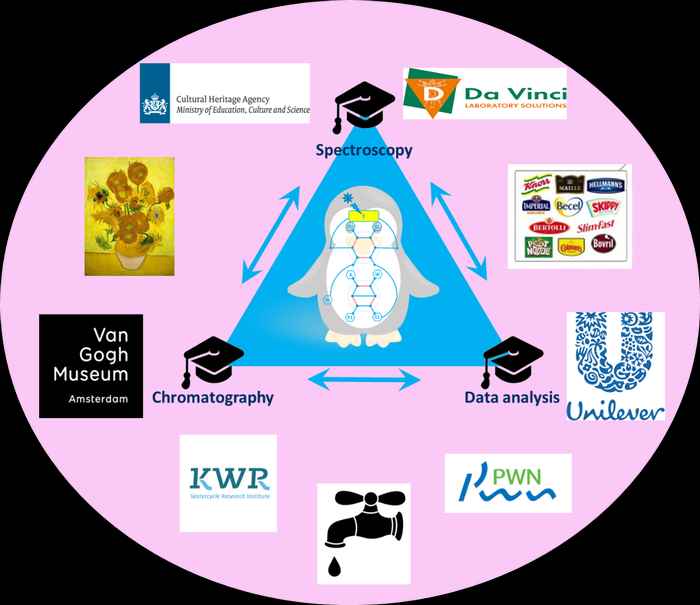
Many chemical components change under the influence of light. Sometimes this is advantageous, for example in water-purification systems, but in most cases it is highly undesirable. Objects of cultural heritage, such as paintings by Vincent van Gogh, may fade and lose their esthetical value. Vitamins in food can disappear. Water purification by UV light can result in the formation of unwanted side products. Within this project (acronym: TooCOLD) we will develop an integral system to study the light-induced degradation of mixture components in a very fast and efficient way, speeding up the process by at least a factor of 20. The combination of advanced analytical instrumentation, light-exposure technology and sophisticated data-analysis techniques, will provide fundamental insights into the degradation mechanisms of many different components. These new insights will be used to protect works of art, to improve water purification systems and to ensure the quality and safety of food.
-
Wetdress: Back to the Object
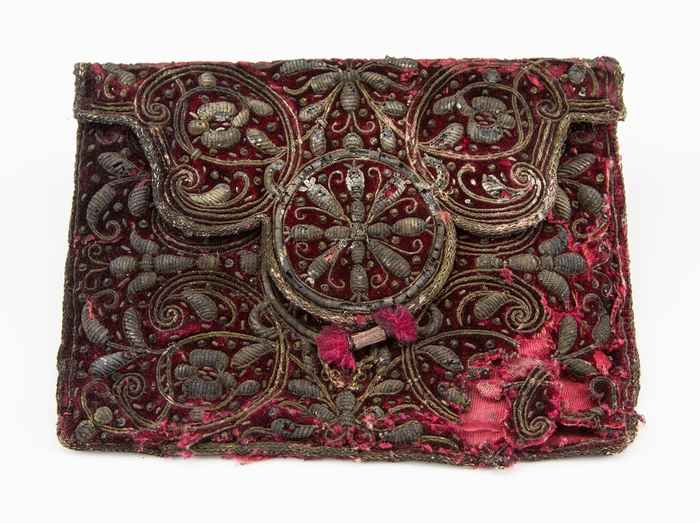
In the summer of 2014, a large number of textiles was found in a seventeenth-century shipwreck near Texel. The goods were collected by sports divers and handed over to the local museum and subsequently to the province of North Holland. The wealth of the collection was striking, such a textile collection was never discovered before from a maritime context, the objects were untouched for almost 400 years.
Within the project a full characterisation of the textile object is foreseen, patterns will be taken and materials (textile, dyes, metal yarns) used will be investigated. The effect of oxygen on the preservation will be examined. The outcome should provide guidelines for exhibition conditions and form the basis of historical research toward this unique collection. In addition to the textile objects, it is good to realise that about 1.000 other objects were found which are currently being examined by Arent Vos (RCE/Batavialand). Additional research on these objects is foreseen as well.
-
Automated interpretation of X-radiographs and CT scans to assess Islamic carpet construction
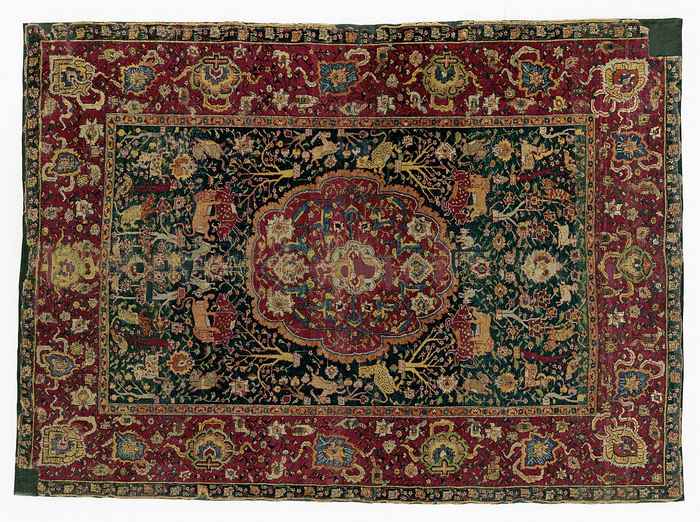
Islamic knotted-pile carpets are remarkable art objects and rich historical sources in museums around the world. The study of their complex characteristics can tell plenty about the date, the context and the societies in which they were produced. Art historians usually focus on the visual observation of their design and weaving structure, but this can be a rather subjective and laborious examination. Therefore, analytical methods that enhance this approach urge further exploration, so that more accurate art historical interpretations can be obtained.
In this project (acronym: CarpetACT) an interdisciplinary combination of art history with analytical and data sciences will be developed, with the aim to improve the weaving examination of these complex carpets, i.e., the spin of threads; the ply and twist of yarns; the thread count and density; and the weaving structure of warps, wefts and piles. Hence, non-invasive analytical techniques, X-radiography and CT scanning, will be tested on a group of 16th- and 17th-century Islamic knotted-pile carpets or fragments of these objects, belonging to the Rijksmuseum collection. Machine-learning methods will be developed to process and compare digital photographs from these objects and a large quantity of data obtained with X-radiography and CT scanning. Within this feasibility study, the main aim is to investigate the possibilities and limitations of the aforementioned techniques and to investigate how data science can enhance the interpretation process of their results. When successful, this approach will be a valuable contribution to historical research and, in particular, improve and accelerate the technological research of historical textiles.
-
GoGreen: Developing sustainable strategies for conservation of cultural heritage
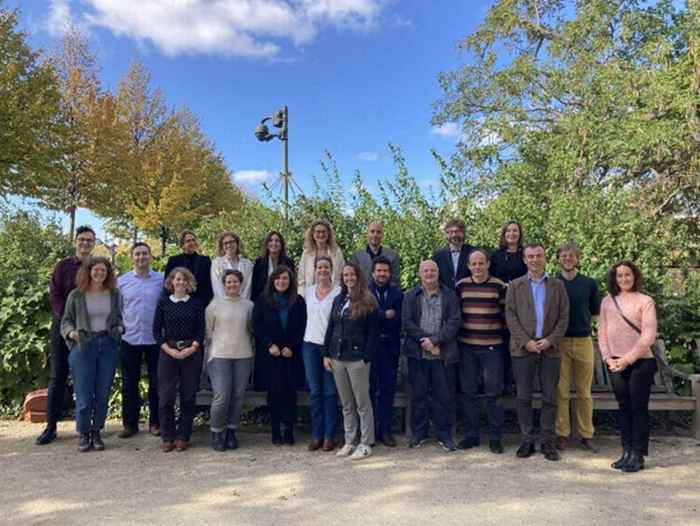
The consortium during the kick-off 6 and 7 October 2022. Photo: GoGreen | HIMS A European consortium of researchers and conservators led by Prof. Katrien Keune aims to develop and promote preventive and remedial strategies for cultural heritage. Based on green principles, the GoGreen project hopes to spearhead a green revolution within conservation. The GoGreen project is granted by European Union’s Horizon programme.
Heritage conservation preserves the tangible remains of society, but often relies on toxic, unsustainable chemicals and materials. It also requires the energy-consuming air conditioning of collections. One of the goals of the GoGreen project is to develop methods that allow more flexible environmental control in collections, which will enable the improvement of energy efficiency. Another important issue, she adds, is the development of sustainable nature-inspired, bio-based and historical conservation treatment-inspired methods for remedial conservation. “We will for instance be looking for innovative cleaning solutions that employ green solvents and bio-inspired reagents. Another focus is on stabilization methods for metal and glass that employ innovative techniques like biopassivation to stabilize metal surfaces, and nanomaterials that mimic the growth of silica to stabilize glass.”
Ensure future impact
The consortium participants in the consortium span all relevant and necessary stakeholders to ensure future impact. They will benchmark the developed methods in collaboration with expert practitioners and museums. They work on a decision model for integrating green thinking in complex conservation decision making. Furthermore, GoGreen involves the development of educational modules and courses for the training of professionals, and prototype of a digital web-app that will aid conservators in the design of green preventive and remedial conservation treatments.”
GoGreen participants
- The Netherlands:
University of Amsterdam (coordinator)
Rijksmuseum - Italy:
University of Bologna
Italian Institute of Technology
SAATI - France:
CNRS
ENS Paris-Saclay
Université Paris 1 - Panthéon-Sorbonne - United Kingdom:
The Courtauld Institute Of Art
English Heritage - Switzerland:
Haute École spécialisée de Suisse occidentale - Norway:
Norwegian Institute for Cultural Heritage Research - Poland:
Jerzy Haber Institute of Catalysis and Surface Chemistry PAS
- The Netherlands:
-
Analytical chemistry on micro-imaging of industrial and historical paints
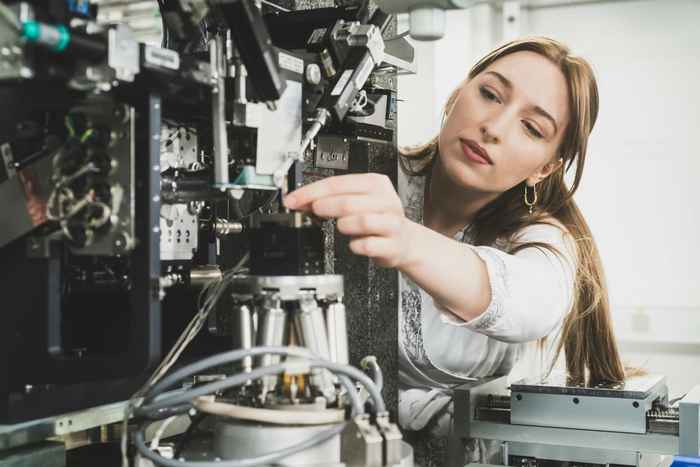
PhD student Ida Fazlic Photo: ESRF The invention of oil paintings fundamentally relied on driers, required to speed up the oxidation of oil double bonds and its polymerization. Historically, these driers were metallic oxides (e.g. PbO), forming soaps by reaction with oil. Sometimes, such metal soaps have concentrated in specific parts of the paint layer, affecting the integrity of the work (e.g. protrusions, delamination, etc.). Today, oil has been replaced by alkyds and lead by the less, but still toxic cobalt. Efforts are paid to develop safer (for human and for environment) driers, mainly based on Mn and Fe. Reactions involved during paint drying are generally followed at the macro-scale. The spatial distribution of these reactions over the paint thickness are usually neglected by the paint companies. This is however important since sedimentation, contact to the support, distance to the surface (O2, light and later pollutants) can affect the drying and ageing reactions.
The analytical approach entails the use of micro-imaging techniques (μXRF, μXAS, μXRD and μFTIR), regularly employed on fragments of historical paintings, to the study of drying reactions. Sample corpus contain historical samples where the (mis-) use of driers is suspected and paint films prepared following both the formulations developed at AkzoNobel and historical recipes. The phd student develops an “all-inclusive” procedure: from the analysis of historical texts, the preparation of model samples, their analysis at the bulk and the microscale to the comprehensive data analysis. In addition to this protocol which could be later exploited for other studies, this work provides a unique comparison between ancient and modern driers, and should path the way for innovative paintings.
Partners in the project are professors Katrien Keune and Bas de Bruin (UvA), Dr Marine Cotte (European Synchrotron Radiation Facility) and Dr Jitte Flapper (AkzoNobel). The project is part of the InnovaXN doctoral training programme that focuses on industrial challenges and exploits the advanced characterisation techniques of the large-scale European research facilities in Grenoble, such as the European Synchrotron Radiation Facility.
People
PhD students
C.L.M. (Lambert) Baij Msc
F. (Fréderique) Broers MSc
I. (Iris) Groeneveld Msc
S. (Selwin) Hageraats MSc
Y. (Yuliia) Orlova MSc
M.J. (Mimi) den Uijl Msc
Contact
You can contact our researchers for whom the details are provided above. For general inquiries please contact the HIMS secretariat.